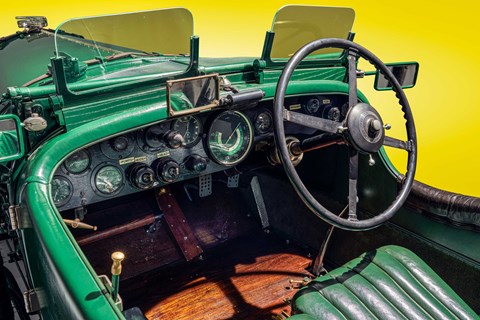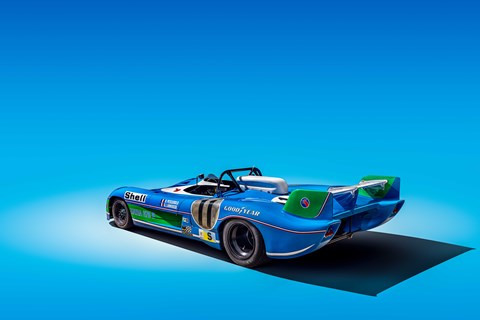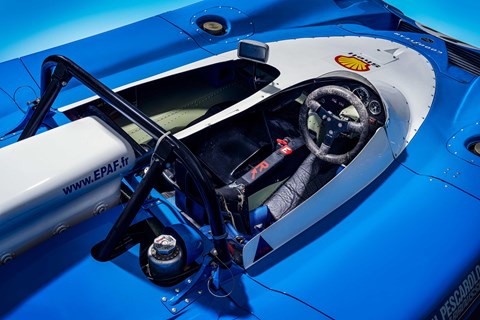► Excerpt from CAR July 2023 feature
► Read in full in our digital edition for 99p!
► Celebration of 100 years of Le Mans
Bentley Speed Six: Bringing a bit of excitement to peacetime
By Gavin Green (icons photographed for CAR by John Wycherley)
Bentley was the most successful pre-war marque at Le Mans, and its ‘Bentley Boys’ team of drivers the most triumphant and charismatic. They included the man who became financial backer and chairman of Bentley in 1926, Woolf Barnato – with three wins, the most successful pre-war driver – and my own favourite of the Bentley Boys, Glen Kidston.
He was the wealthiest (even richer than Barnato), the most daredevil (among a fearless band of brothers) and won Le Mans in 1930, with Barnato. After numerous near misses in aeroplane, motorcycle, speedboat, battleship and submarine accidents, his de Havilland Puss Moth crashed in a dust storm over the Drakensberg mountains on the return leg of a record-breaking flight from the UK to South Africa. He died aged just 32, a year after his Le Mans triumph.
Read the full article and access CAR’s premium content in 99p trial
Barnato and Kidston won in a Bentley Speed Six, surely the biggest, heaviest and highest car ever to win Le Mans. ‘Old Number Three’ (pictured) was a team car that raced in 1930 and was mechanically identical to ‘Old Number One’ which won both in ’29 (when ‘Tim’ Birkin was Barnato’s co-driver) and again in 1930.
The Speed Six was the most successful pre-war racing Bentley and company founder WO Bentley’s favourite. More high-performance GT than sports car, it was fast, reliable and tough: Ettore Bugatti called it the world’s fastest truck. Powered by a 6.6-litre straight-six, it was a development of the 1926 6½-litre Bentley: racing versions had a shorter wheelbase and developed 200bhp.

The Speed Six’s first Le Mans win, in ’29, was Bentley’s most dominant: Barnato and Birkin held the top spot from start to finish and led home three 4½-litre Bentleys (Kidston and Jack Dunfee were second). The first non-Bentley (an American Stutz), back in fifth, was 21 laps behind the winning Speed Six.
The 1930 victory was much harder fought. Bentley faced the might of Mercedes-Benz, and its factory-entered supercharged SSK driven by Rudolf Caracciola, Germany’s greatest pre-war driver. To respond, Bentley had a new supercharged car of its own: the Blower.
Six Bentleys entered: three Speed Sixes and three Blowers. The Bentley strategy was clear: the Blowers were faster than the Speed Sixes but more fragile. Led by ‘Tim’ Birkin, they would race the SSK early on and break it. It worked. Caracciola was out by 2.30am, the Blowers – job done – didn’t last much longer, and the Barnato/Kidston Speed Six cruised to its second Le Mans victory.
Bentley’s fifth win, and its fourth in succession, was to be Bentley’s last Le Mans entry for 71 years. The company was in grave financial trouble, to be rescued by rival Rolls-Royce in late 1931.
But that is not the end of the Speed Six story. Twelve new ‘continuation’ Speed Sixes are to be built, following the ‘continuation’ Blower (see CAR August 2021). ‘Old Number Three’ has supplied much of the design detail for the faithful facsimile. The magic lives on, as Le Mans heads beyond 100 years.
Click here for Jaguar D-Type and Ford GT40 tales in the full feature!
Matra MS670: It’s coming home
By Mark Walton (icons photographed for CAR by John Wycherley)
If you’re a conspiracy theorist, the story goes like this: it’s 1971, and the Commission Sportive Internationale, motorsport’s Paris-based governing body, decides it’s been too long since a home-grown French team won Le Mans. National pride had been dented by the dominance of the Americans (Ford) and Germans (Porsche), so the CSI comes up with a cunning plan: it bans 5.0-litre engines and limits capacity to just 3.0 litres. None of the rival factory teams have a suitable engine ready for 1972… but a French manufacturer does!

Matra, recent winner of the F1 title with Ken Tyrrell and Jackie Stewart, has a 3.0-litre V12 that has been running at Le Mans since 1968! And so, in 1972, the French fairytale comes true – Ferrari and Porsche withdraw, and a Gallic Blue Matra MS670 wins the race to the delight of the partisan crowds!
So the story goes, if you’re a conspiracy theorist… And if you’re not? Well, then it’s all a load of codswallop.
In reality, the CSI did reduce engine size to 3.0 litres for 1972, and this did hit Porsche and Ferrari; but the change was driven by a desire to align sports cars with F1 to benefit from the proliferation of 3.0-litre engines in the top-tier single-seater category. And while it’s also true that Ferrari didn’t contest the 1972 Le Mans because it knew its F1-derived V12 wouldn’t last the distance, the Italians won every other round that season – 10 out of 11 races – with its 312PB. So its 3.0-litre engine wasn’t too shabby.
Read the full article and access 10 years of CAR magazine content in 99p trial
No, Matra’s 1972 win came because the French team threw the kitchen sink at Le Mans. In 1972, Matra took four cars and over 120 engineers to the event, and its MS670 was built on six years of hard Le Mans graft. The team was also deeply patriotic and passionate. Four-time Le Mans winner Henri Pescarolo recalled years later: ‘We were ready to kill ourselves for the team.’

The desire for some true-blue French success didn’t get in the way of driver selection, however. In 1972 Pescarolo found himself sharing the MS670 with double F1 champion Graham Hill, a decision the Frenchman resisted at first. ‘Le Mans is so different from F1. I said “What if it’s raining in the night, or there’s fog in the morning, do you think he will be prepared to take risks?”’
However, in a race dogged by bad weather, Pescarolo saw Hill’s class. ‘He was bloody quick, of course,’ the Frenchman said. ‘When I looked at his lap times during the night, and in the rain, I thought, “Okay, I can sleep now.”’
And so the pair won the 1972 race in a triumphant Matra 1-2, making Graham Hill the first and so far only driver to win motorsport’s “Triple Crown”, with victories in Monaco, the Indy 500 and Le Mans.
It also made this Matra MS670 a very special car. When it came up for sale recently, Pescarolo was horrified, describing it as ‘a monument of world and French motorsport’ that needed protecting. That didn’t stop it selling for over £6 million – a price that reflected both its significance, and the allure of that screaming 3.0-litre V12.
Click here for Porsche 962, McLaren F1 GTR, Peugeot 908 and more!
